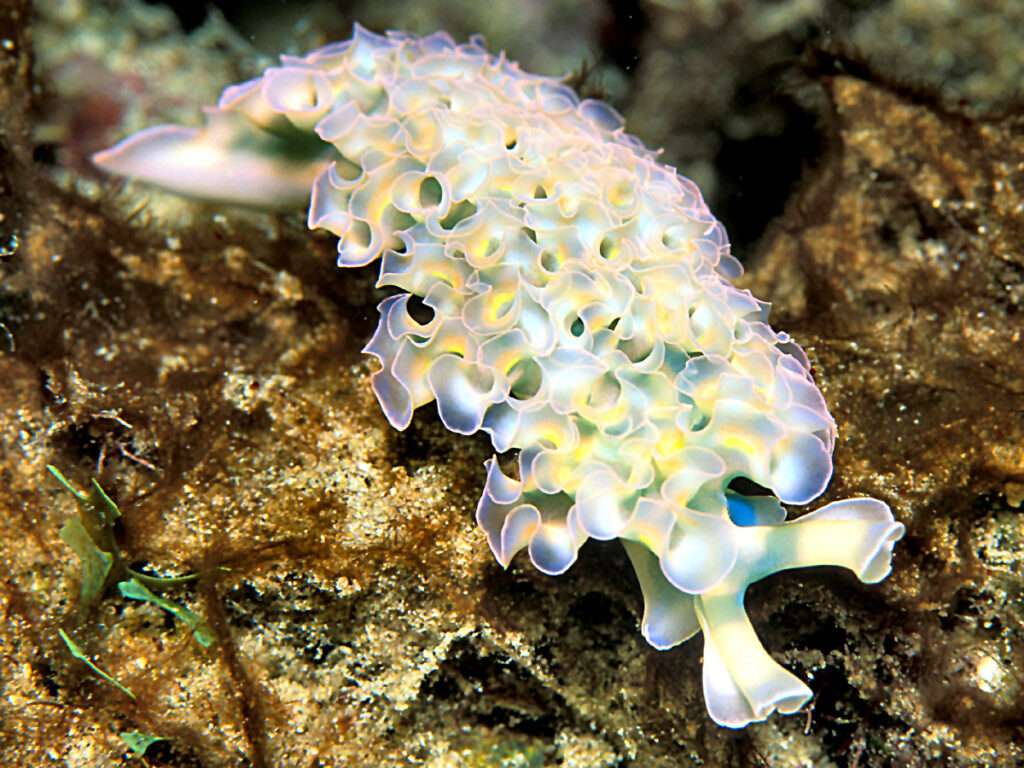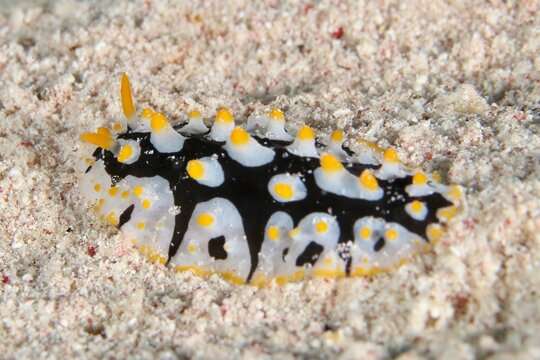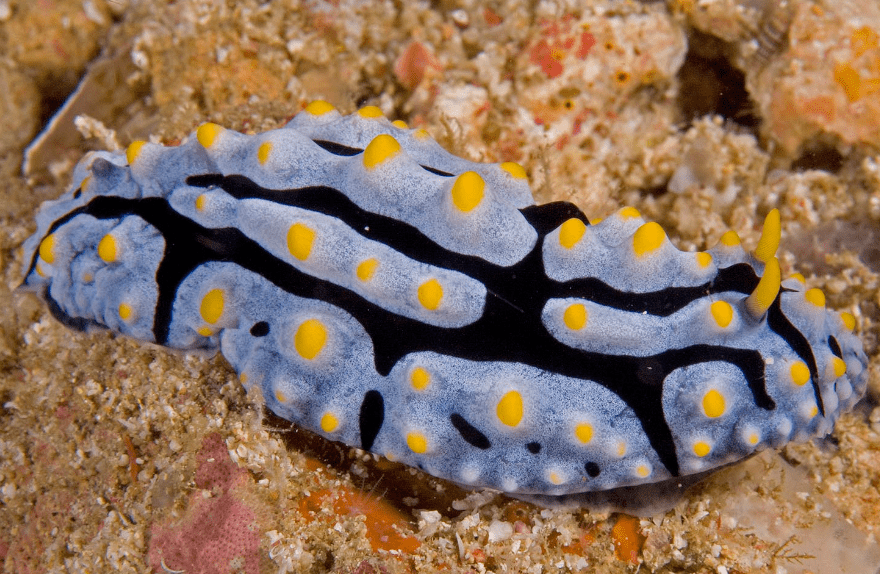
Description
A species of small sea slug belonging to the Cephalaspidea, or headshield slugs, order of marine opisthobranch gastropod mollusks is called Chelidonura varians. Its vivid blue and black colouring serves as the defining feature of the Blue Velvet Nudibranch. The elongated body has a smooth velvety texture, and the headshield appears to have two enormous antennas. Due to the presence of protective compounds in its body, the nudibranch’s vivid blue colour serves as a warning to potential predators that it may be harmful or distasteful.
Geographical Distribution
The warmer waters of the Indo-Pacific area, ranging from the Red Sea and East Africa to the Philippines, Australia, and Fiji, are home to the Blue Velvet Nudibranch. This nudibranch normally lives in depths of 3 to 30 metres and loves sandy or rubble-bottom areas with dense coral development.
Behavior
Simultaneous hermaphroditism is an intriguing reproductive strategy used by blue velvet nudibranchs. Each person has both male and female reproductive organs, which allows them to mate with any other individual of the same species. It is common to see mating partners intertwined for long periods of time while transferring spermatozoa.
Blue velvet nudibranchs lay a ribbon-like egg mass that is attached to a solid surface after mating. The developing eggs eventually hatch into veligers, which are free-swimming larvae. The veligers transform into adult nudibranchs in a few days, starting a new life cycle.

Keeping as Pet
It might be difficult to care for a blue velvet nudibranch as a pet because of their unique nutritional needs. They mainly eat several species of flatworms, which are frequently employed in aquariums to manage pest infestations. In order for the nudibranch to survive and thrive, flatworms must be available at all times. The nudibranch may starve if the flatworm population in your tank is insufficient or exhausted.
Chelidonura varians is used in aquariums to get rid of minor flat worm incursions since it feeds on flatworms.
Blue velvet nudibranchs need a steady, well-maintained aquatic environment in addition to their nutrition. Being sensitive to changes in water chemistry, temperature, and current, nudibranchs require an aquarium that is set up and cared for appropriately. These animals can crawl over obstacles and silicone seams, which makes them prone to escaping from tank enclosures. In order to ensure their safety, a secure enclosure is essential.
While keeping a blue velvet nudibranch as a pet is feasible, it’s crucial to approach their upkeep with the necessary preparation, understanding, and commitment. Before getting one, potential owners should learn about the needs of the species, get the required tools, and make sure they can give a steady supply of food. Finally, knowing the difficulties and dangers of keeping a blue velvet nudibranch will help avoid problems and guarantee the welfare of these lovely creatures.
Table





